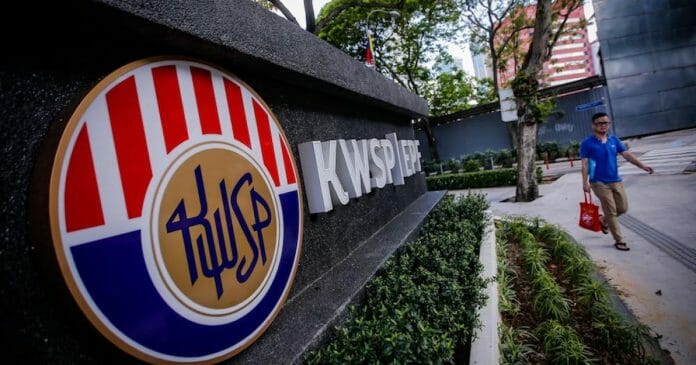By Jason Loh
The existence of the Employees Provident Fund (EPF) is a basic pillar of our socio-economic and social security setting in Malaysia as well as integral to our economic system – in the role that it plays in also providing liquidity to both the State and domestic financial/capital market.
This is why extreme caution is urged in the implementation of the i-Sinar (i.e., Account 1) withdrawal despite the populism of the suggestion – set against unprecedented and desperate times.
And now i-Citra has just been announced on June 28 as part of the new aid and stimulus package known as Pemulih (People’s Well-Being and Economic Recovery Package).
Still, the government should tread carefully, nonetheless.
Overly loose withdrawal conditions might lead to the rapid depletion of existing contributions. In turn, this might affect the EPF’s operational capacity to ensure sustainable returns or even the minimum guaranteed at 2.5 percent (Conventional Saving) under Section 27 of the Employees Provident Fund (EPF) Act (1991). It’s simply because the contributions are regularly invested and reinvested. Lower contributions result in lower returns, ringgit for ringgit domestically and ringgit for USD or major currencies overseas – with the exchange rate at play.
On average, the EPF receives between RM55 billion and RM75 billion of gross contributions annually – with a net inflow of an average of RM1.7 billion a month pre-Covid-19 – and this has been affected by the i-Lestari (Account 2) and i-Sinar withdrawals.
Some politicians, including those with a technocratic bent, have called for EPF to raise funds by selling bonds including to Bank Negara, if need be, in order to cover for withdrawal shortfalls.
On the other hand, overly strict conditions might not meet the needs of those eligible – such as paying down existing loans, and for spending/cashflow needs which of course feeds into the circulation of money in the real economy.
Formed in 1951, the EPF is one of the world’s oldest retirement funds. The 1991 Act mandates the EPF to provide for a “… scheme of savings for employees’ retirement and the management of the savings for the retirement purposes and for [related] matters …”. Over the decades, EPF’s fund size has grown – from RM2.6 million in 1952 – to RM1.02 trillion by 4Q 2020 (prior to the i-Sinar withdrawals). In Feb 2021, it stood at RM998 billion. The fund is expected to cross the RM1 trillion threshold again this year – with contributions up again.
Despite a 5.2% dividend for conventional savings and 4.9% dividend for shariah savings in 2020 when the Covid-19 pandemic was at its height, EPF still recorded its highest-ever gross investment income last year with RM60.98 billion by a savvy risk analysis of the global economic dynamics guided by its Strategic Asset Allocation (SAA) principles as driven by the Investment Division.
In turn, the Investment Division’s operational mandate can be seen in its “primary long-term investment objectives [which is] to preserve and enhance the value of capital from members’ contributions; and to maintain stable and consistent returns over the long-term within tolerable risk limits”.
The SAA has ensured that EPF’s investments remained resilient and steady. By asset class, fixed income instruments made up 46 percent, equities comprised 42 percent, real estate/infrastructure alongside money market instruments made up 5 percent and 7 percent, respectively.
The average dividend returns between 2010 to 2020 has been 6.7 percent, whereas the compound annual growth rate (CAGR) of EPF’s investment in the same 10-year period is 8.5 percent. Its total asset base had grown at a 11.2 percent CAGR since 1965. Currently, the asset and portfolio allocation for foreign investments in 1Q 2021 is 36 percent whereas it was 33 percent in 4Q 2020.
However, allowing for the unconditional withdrawal of Account 1 under i-Sinar – and now under i-Citra – could set an undesirable precedent (i.e., unintended consequences) for the future.
So far, EPF’s investments and returns have not been affected to the point that would cause i-Lestari and i-Sinar withdrawals to have been a serious policy misstep in hindsight.
And hence, the introduction of i-Citra which would enable contributors to withdraw up to RM5000. It is expected to benefit some 12.6 million EPF members. Payment would be split into five months at RM1,000 a month, depending on the amount available in the account. Again, like the latest announcement on i-Sinar, there are no conditions attached. It’s anticipated that RM30 billion would be channelled into the real economy.
As the practice of EPF withdrawals is firmly part of the government’s fiscal and socio-economic policies during this time of economic uncertainty caused by Covid-19, it’s hereby suggested that steps should be taken to ensure that it doesn’t set a precedent for the future.
But surely unprecedented times precisely means that the next super-crisis could well be 50 or even 100 years down the road?
Not if Covid-19 is set to become endemic. Now, of course, it doesn’t necessarily mean that just because if Covid-19 becomes endemic, therefore, it means the pandemic has been tamed and rendered harmless like the flu.
After all, the emergence of variants such as the Delta variant (B.1.617.2 variant) and now the Delta Plus variant (B.1.617.2.1/AY.1) as a result of mutation ought to be a lucid reminder of how the nature of Covid-19 is unpredictable. The Delta Plus variant’s spike protein mutation called K417N is also found in the Beta variant.
So, there’s still a probability of Covid-19 becoming even more dangerous in terms of infection (extent of transmissibility, risk profile), replication (speed), survival (longevity) and immunity to the vaccines (through mutations), and perhaps even detection in the form of diagnostic tests (rapid antigen/RTK, polymerase chain reaction/PCR).
Which means that we might return to a situation where even (full) lockdowns might make a return in the future as a worst-case scenario. Or strict standard operation procedures (SOPs) are reintroduced that could affect and constrain business operations and, by extension, employment (even if ever so temporary) as transitions to digitalisation and a low-touch economy continues to gather pace.
Be that as it may, it’s urged that we should treat such withdrawal facilities as definitively “one-off” – although deemed necessary under the current circumstances.
As it is, EPF CEO Amir Hamzah Azizan isn’t concerned with the impact of i-Sinar and i-Lestari withdrawals to liquidity and portfolio returns per se but with the capacity of Account 1 and Account 2 to guarantee the adequate retirement of members who have withdrawn (“Withdrawal of Account 1 shook EPF to its core, says Amir”, The Edge Markets, June 24, 2021).
Towards that end, it’s hereby proposed that withdrawal should be subsequently counter-balanced with matched contribution by the government – to assist the affected contributors to rebuild their savings. Ringgit for ringgit matching by the government could be capped at between RM25000 to RM50000 – with 50 percent for Account 1 and the other 50 percent for Account 2. The eligible amount left in the combined accounts or criterion for qualifying could be capped at RM30000, for example.
With the same category of contributors in mind, other measures could extend to the creation of “Malaysia Economic Shares” – which is based on GDP growth or performance of the previous year (let’s say a minimum of 6 percent per year which then translates into e.g., RM1500 on a RM500 increment with each corresponding percentage). The shares do not require paper certification, and cash is paid directly into the accounts of these EPF account holders.
It’s hoped that the truly (or unprecedentedly) “unique” crisis of Covid-19 would render the i-Lestari, i-Sinar, and now i-Citra withdrawals as truly exceptional. And, therefore, ought to be deemed as truly “one-off” policy decision as a whole and an unnecessary policy option in the future.









